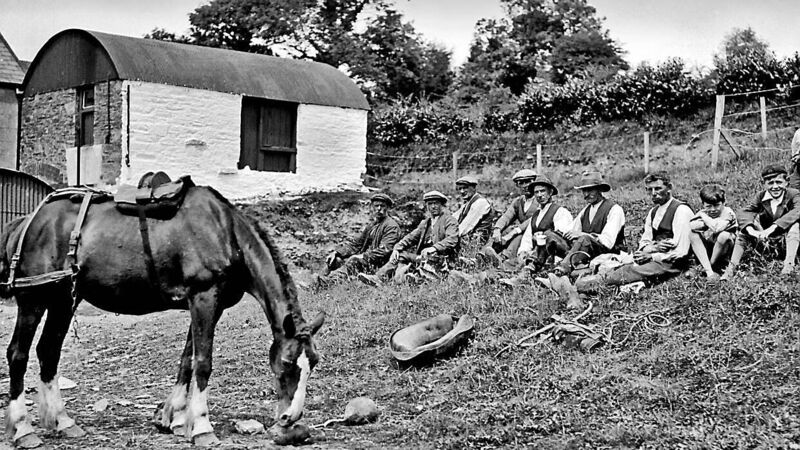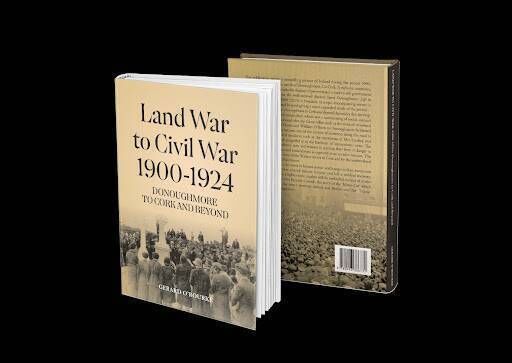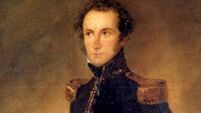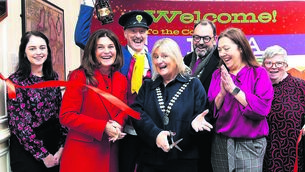Treasure trove of history in a book on Donoughmore’s past

He told us the gold chain was just the fourth known one worn by Cork’s First Citizen in over 1,000 years. Made in the year 1787, it was first worn 237 years ago by Mayor James Kingston.
The current Lord Mayor said: “I’d love to press ‘Play’ on this chain, you can imagine what this chain has seen, all of a sudden it could tell all the stories and the emotions.”
He went on to say that in a month’s time he will be handing on this precious object to its next ‘custodian’.
Richard Wine was the first Mayor of Cork in 1273 - before that here by the Lee we had a Provost. Eugene Crean in 1899/1900 was the last to hold the title of Mayor of Cork. In 1900, the title was changed to Lord Mayor and Sir Daniel Hegarty was the first incumbent.
On Friday night last, we heard a lot about conflict, the Land War, War of Independence and Civil War too. I thought of the Tithe War of the 1830s here in my own parish when 12 unarmed men were shot down and died standing up for their beliefs - known forever more as the Battle of Gortroe.
A century later, Patsy Barry NT, describing that bloody and awful incident, wrote: “The leader of the fight against the military at Gortroe was a man named Shawn Ahern, generally known as Shaun Vat (Sean, son of Batt). He belonged to an old family stock that still flourishes in Bartlemy and has branches in many parts of North and East Cork.”
Well, Joni Mitchell’s song The Circle Game described my feelings exactly;
Yes, truly we can’t return, we can only look behind from where we came, but in many circumstances that past is still mirrored in today’s world.
Around 100 people were present in Stuake Hall, Donoughmore, on Friday night for a book launch. I’ve attended many such events over the years and each is truly unique, just as every book is different.
One of the descendants of the ‘Shaun Vat’ Aherns was Tricia Ahern, who married Gerard O’Rourke, a native and proud son of Donoughmore. Hewn from the fields, bogs, hills and streams of a rural parish, Gerard always had a passion for his native place. He wrote a history of his local GAA Club in 1985 and then Ancient Sweet Donoughmore, published in 2015. That last volume brought the story of his own place up to 1900.
In recent years then, Gerard undertook a mammoth undertaking to chronicle events during the first quarter of the 1900s.
We have just finished the Decade of Commemoration in Ireland, which encompassed World War I, the 1916 Rising and its aftermath, the War of Independence and the heartbreaking and family-breaking Civil War.
Many, many scholars undertook research into various and different facets of this tumultuous period in Irish history, and books, television programmes and radio documentaries have all resulted, which have added to our knowledge and understanding of those epic times.
An enthusiastic local historian, he recalled some years back he was trying to find out as much as he could about the building of the Inniscarra Dam. He visited a man in his eighties in Cork city. This man was the ‘concrete scientist’ during the dam’s construction.
Kieran enquired if he had kept any notes, plans, drawings, or any material from the 1953-1957 period.
“No,” was the answer, but immediately the man’s wife said: “What about all the stuff above in the attic?”
Soon after, Kieran had access to a vast repertoire of invaluable material on the Inniscarra Dam. The Lord Mayor stressed the importance of stories and how they should be kept and preserved.
“How often,” he asked, “do we hear people say, ‘My mother or father used to say…’.” He said the depth of Gerard O’Rourke’s research was stunning. The term ‘Nostalgic Currency’ was used by the Lord Mayor, as he described how Gerard ‘mined’ into memories, into letters, objects and material handed down from generation to generation.
“We need to do more research, reach out more and see what’s in people’s attics.”

Gerard O’Rourke’s book is entitled Land War To Civil War,1900-1924 - Donoughmore To Cork And Beyond. Yes, it’s a publication of 446 pages dealing with Donoughmore in turbulent times, but what happened in that parish happened in so many other places too.
Much has been written and published about the period up to the end of the War of Independence, and in recent years a vast amount of material has become available online. The Bureau of Military History, the Military Service Pension Collection, and the Military Archives of Ireland are absolutely brilliant sources of history.
His words in dealing with the bitter Civil War paint a true and sad picture of a blood-stained era in Donoughmore and elsewhere.
Meticulous is defined as ‘taking or showing extreme care about minute details; precise; thorough’ and that’s an absolutely accurate and apt description of Gerard’s research.
Each chapter draws on different sources and there are 46 pages of End Notes which tell us precisely where different facts, figures, reports, and statistics come from.
As well as the major engagements of the Volunteers, ambushes, skirmishes, kidnappings and executions, the book also contains much invaluable information about daily life in the area. The mundane, hum-drum, sometimes even slightly whimsical happenings that give colour to the ordinary are dealt with.
Like at Ahadillane Petty Session Court in August, 1900, where a man was charged with collecting money by false pretences.
Sergeant O’Farrell found the defendant asleep in a field and on his person was five pence, a tie, a purse, a box of matches and a pipe. He was sentenced to 12 hours imprisonment!
The aftermath of the Dripsey Ambush, the execution of Major Compton Smith, and the ‘disappearance’ of Mrs Lindsay and her butler James Clarke are dealt with extensively.
Gerard O’Rourke’s book is dealing with history, but in reality it’s much more than that.
Sadly, Tricia, Gerard’s wife, died last August. He dedicates to book to her - it was her generosity and encouragement that allowed him the space and time to pursue and finish this publication.
For every copy sold, €15 will be donated to supporting cancer services in Cork.
When Lord Mayor Cllr Kieran McCarthy sang, there wasn’t a dry eye in Stuake Hall:







 App?
App?




